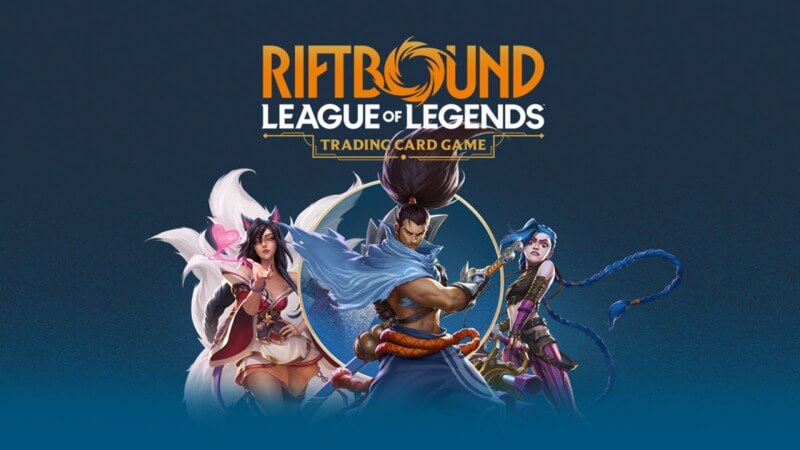First off, the game’s initial set is called Origins and will include 377 cards. Of these, there are Legend cards that determine which deck color combinations can be played: for instance, if your Legend card is Purple and Red, your deck can only include cards that are marked with these colors. There isn’t a specific theme for the inaugural set, as it’s meant to provide a foundation for the game going forward.
There will be three main offerings at launch: booster packs, Champion Decks, and Proving Grounds. Proving Grounds is a collection of starter cards aimed at trading card game newcomers that will go for $29.99. Since these cards are intended to attract and onboard new players, they are more straightforward and aren’t necessarily designed for competitive play.
As for Champion Decks, these are three pre-made decks respectively built around the Champion cards Jinx, Viktor, and Lee Sin. Each deck is $19.99, and they are designed to get players facing off against each other as soon as possible while also acting as a foundation for building stronger decks. Together, these Champion decks account for all six possible Rune colors. The decks will also include a paper playmat, a guide, and a booster pack.
As for some of the Champion cards that account for the different possible color combinations, they are the following: Za’asa (Blue and Red; counterspell oriented), Volibear (Orange and Red; ramp), Jinx (Red and Purple; agro and self-discard), Darius (Red and Yellow; playing multiple units per turn), Ahri (Green and Blue; holding the battlefield), Lee Sin (Orange and Green; buffs), Yasuo (Purple and Green; movement between battlefields), Leona (Green and Yellow; control and stun), Teemo (Blue and Purple; placing hidden traps), Viktor (Yellow and Blue; building up an army of tokens), Miss Fortune (Orange and Purple; movement), Sett (Yellow and Orange; buff units and spend those buffs for temporary benefits).
We also received information on booster packs, which feature 14 randomized cards for $4.99. Each booster pack will have seven common cards, three uncommons, one foil, two rares or better, and a “play object” like a token or Rune (these generate energy that is used to play cards), which can also come in foil or alt art variants. Beyond this, there are also several layers of cosmetic rarity, with alternative art cards, rarer “overnumbered” cards that come in about one in 72 packs, and stamped signature cards that appear in one out of 10 overnumbered cards. For context on these rates, Magic The Gathering booster packs go for $6.99 and include 15 cards, with one land, ten commons, three uncommons, and one rare or better.
Apparently, Riot’s approach for Riftbound is to make the cards relatively accessible for those interested in playing against one another and constructing decks while also including a large number of cards with alternate art for collectors. They intend to monitor the market and reprint cards if needed while attempting to avoid overprinting. Another focus is to make it appealing for players to visit their local card shops, and there will be promotional events that feature special packs with unique art in some cases.
The current goal is to release around four sets a year, with cards beginning to rotate out of the Constructed format in 2028, although this is not set in stone. As for Origins, the rest of the unannounced cards will be revealed from June 9 until July 18, a few weeks before the game’s release in China. While Riftbound is still a few months out, it seems we’re going to have plenty of time to theorycraft decks before release. Here’s hoping that supply holds out when October finally comes around, because what we’ve played of this TCG seems quite promising so far.
